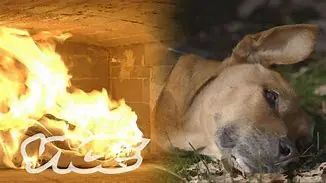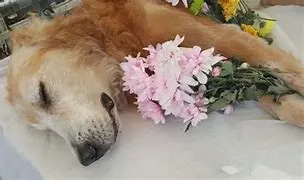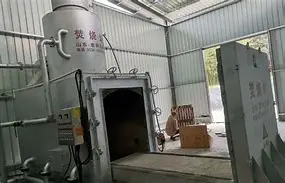
Introduction
Losing a pet is one of the most heartbreaking experiences for any animal lover. Pets are more than just animals; they are loyal companions, faithful friends, and cherished family members. When a pet passes away, many pet owners want to honor their memory and keep them close in some way. One of the most common and respectful ways to do that is by choosing pet cremation.
Pet cremation is the process of reducing a pet’s body to ashes and bone fragments using high heat and flame or water and chemicals. Pet cremation allows pet owners to keep their pet’s remains with them, scatter them in a meaningful place, or bury them in a pet cemetery. Pet cremation also has some environmental and practical benefits, such as saving space, preventing contamination, and avoiding legal issues.
But how does pet cremation work exactly? What are the different types of pet cremation? How much does it cost and where can you find a reputable pet crematory? In this article, we will answer these questions and more, to help you understand everything you need to know about pet cremation.
What Happens During Pet Cremation?

Pet cremation is similar to human cremation, but there are some differences in the methods, equipment, and regulations. Pet cremation can be performed using two main methods: flame-based cremation and water-based cremation.
Flame-Based Cremation
Flame-based cremation, also known as fire cremation or traditional cremation, is the most common and widely available method of pet cremation. It involves placing the pet’s body in a cremation chamber, also called a retort, and subjecting it to intense temperatures of at least 1400 – 1800 degrees Fahrenheit. This reduces the organic matter down to ash and bone fragments in a matter of minutes or hours, depending on the size and weight of the pet.
The ashes and bone fragments are then collected from the cremation chamber and processed to remove any metal or foreign objects, such as collars, tags, or implants. The remains are then pulverized to a fine, uniform consistency, and placed in a plastic bag or a container of the pet owner’s choice. The remains are usually white or gray in color and weigh about 3 to 5 percent of the pet’s original body weight.
Water-Based Cremation
Water-based cremation, also known as alkaline hydrolysis, aquamation, or bio-cremation, is a newer and more eco-friendly method of pet cremation. It involves placing the pet’s body in a stainless steel chamber filled with water and alkaline chemicals, such as potassium hydroxide or sodium hydroxide. The chamber is then heated and pressurized to create a chemical reaction that breaks down the pet’s body into its basic elements, such as amino acids, sugars, and salts. The process takes about 3 to 4 hours, depending on the size and weight of the pet.
The liquid solution that results from the water-based cremation is sterile and pH-neutral, and can be safely disposed of in the sewer system or used as a fertilizer. The solid remains, which consist of bones and teeth, are then collected from the chamber and dried. The remains are then processed to remove any metal or foreign objects, and pulverized to a fine, uniform consistency, and placed in a plastic bag or a container of the pet owner’s choice. The remains are usually light brown or tan in color and weigh about 1 to 2 percent of the pet’s original body weight.
What Are the Different Types of Pet Cremation?

Depending on the pet crematorium you choose and your personal preferences, you can opt for different types of pet cremation. The main types are:
Private Cremation
Private cremation means that your pet is cremated alone, in a private chamber, and that you receive only your pet’s ashes back. This is the most expensive but also the most personalized and respectful option, as it ensures that there is no mixing or contamination of remains. Some pet crematories also allow you to witness the cremation, or to have a viewing or a memorial service before or after the cremation.
Communal Cremation
Communal cremation means that your pet is cremated with other pets, in a shared chamber, and that you do not receive any ashes back. This is the least expensive but also the least personalized option, as it does not allow you to keep or scatter your pet’s remains. The ashes from communal cremation are usually disposed of by the crematory, or spread in a common area, such as a garden or a field.
Partitioned Cremation
Partitioned cremation, also known as individual cremation or semi-private cremation, is a middle ground between private and communal cremation. It means that your pet is cremated with other pets, but in a separate section of the chamber, using bricks or trays to create partitions. This reduces the risk of mixing or contamination of remains, but does not eliminate it completely. You can receive your pet’s ashes back, but they may contain traces of other pets’ remains.
How Much Does Pet Cremation Cost?
The cost of pet cremation depends on several factors, such as the type of cremation, the size and weight of the pet, the location and reputation of the crematory, and the additional services or products you choose. The average cost of pet cremation in the US ranges from $50 to $350, but it can vary widely depending on the specific circumstances. Here are some general estimates of pet cremation costs by type and size:
- Communal cremation: $50 to $150
- Partitioned cremation: $100 to $200
- Private cremation: $150 to $350
- Small pets (such as hamsters, rabbits, or birds): $30 to $100
- Medium pets (such as cats or small dogs): $100 to $200
- Large pets (such as large dogs or horses): $200 to $500
These costs do not include the cost of urns, caskets, or other containers for the ashes, which can range from $10 to $200 or more, depending on the material, design, and quality. They also do not include the cost of transportation, viewing, memorial service, or other extras that you may want to add to your pet’s cremation.
Where Can You Find a Reputable Pet Crematory?

Finding a reputable pet crematory is very important, as you want to ensure that your pet is treated with dignity and respect, and that you receive the correct and authentic remains. Unfortunately, there are some unscrupulous or unprofessional pet crematories that may not follow the proper standards or procedures, and may even scam or deceive you.
To avoid such situations, you should do some research and ask for recommendations before choosing a pet crematory. Here are some tips to help you find a reputable pet crematory:
- Ask your veterinarian for referrals. Your veterinarian may have a trusted relationship with one or more pet crematories and can help you make the arrangements. However, you should not feel obligated to use the crematory that your veterinarian suggests, and you should always ask for details and options.
- Check the credentials and accreditations of the pet crematory. Look for signs of professionalism and quality, such as membership in industry associations, compliance with state and local regulations, and certification by third-party organizations. For example, the International Association of Pet Cemeteries and Crematories (IAOPCC) is a non-profit organization that sets standards and best practices for pet aftercare providers, and offers accreditation to those who meet its criteria.
- Visit the pet crematory in person. If possible, you should visit the pet crematory before making a decision, and ask for a tour of the facility and the equipment. This will allow you to see the condition and cleanliness of the place, the staff and their qualifications, and the cremation process and procedures. You should also ask questions and request a written contract that specifies the type, cost, and timeline of the cremation, as well as the return or disposal of the ashes.
- Read reviews and testimonials from other pet owners. You can also look for online reviews and testimonials from other pet owners who have used the pet crematory you are considering. This will give you an idea of their reputation, reliability, and customer service. However, you should also be aware that some reviews may be biased or fake, and that you should not base your decision solely on them.
What Can You Do With Your Pet’s Ashes?

After your pet is cremated, you will receive their ashes in a plastic bag or a container of your choice. You can then decide what to do with them, depending on your personal preferences and beliefs. Here are some of the most common and popular options for your pet’s ashes:
- Keep them in an urn or a casket. You can keep your pet’s ashes in a special urn or a casket that you can display in your home, garden, or another place that reminds you of your pet. You can choose from a variety of materials, shapes, sizes, and designs, or even customize your own. You can also add a photo, a nameplate, or a personalized message to the urn or the casket.
- Scatter them in a meaningful place. You can scatter your pet’s ashes in a place that has a special significance for you and your pet, such as their favorite park, beach, or trail. You can also scatter them in a scenic or natural location, such as a lake, a mountain, or a forest. However, you should always check the local laws and regulations before scattering ashes, and make sure that you have permission from the landowner or the authorities.
- Bury them in a pet cemetery or a backyard. You can bury your pet’s ashes in a pet cemetery or a backyard, either in the container they came in or in a biodegradable urn or a casket. You can also add a marker, a plaque, or a headstone to the burial site, with your pet’s name, photo, or a personalized message. Burying your pet’s ashes can give you a sense of closure and a place to visit and pay your respects. However, you should also check the local laws and regulations before burying ashes, and make sure that you have permission from the landowner or the authorities.
- Turn them into a keepsake or a jewelry. You can turn your pet’s ashes into a keepsake or a jewelry that you can wear or carry with you, such as a pendant, a ring, a bracelet, or a keychain. You can choose from different materials, such as glass, metal, or resin, and different colors, shapes, and designs. You can also engrave your pet’s name, photo, or a personalized message on the keepsake or the jewelry. Turning your pet’s ashes into a keepsake or a jewelry can help you feel closer to your pet and keep their memory alive.
- Plant them with a tree or a flower. You can plant your pet’s ashes with a tree or a flower, either in a pot or in the ground, using a biodegradable urn or a casket. You can choose a tree or a flower that has a symbolic meaning for you and your pet, such as a rose, a lily, or a cherry blossom. You can also add a marker, a plaque, or a tag to the plant, with your pet’s name, photo, or a personalized message. Planting your pet’s ashes with a tree or a flower can create a living memorial for your pet and benefit the environment.
READ MORE
The Craigslist Albuquerque Pets Marketplace: A Sure Guide
Conclusion
Pet cremation is a respectful and dignified way to say goodbye to your beloved pet and honor their memory. Pet cremation can be done using flame-based or water-based methods, and you can choose from private, communal, or partitioned types. Pet cremation costs vary depending on the type, size, and location, but they are generally affordable and reasonable. You can find a reputable pet crematory by asking for referrals, checking the credentials, visiting the facility, and reading the reviews. You can also do various things with your pet’s ashes, such as keeping them in an urn, scattering them in a place, burying them in a cemetery, turning them into a keepsake, or planting them with a plant. Whatever you decide, pet cremation can help you cope with your loss and celebrate your pet’s life.
FAQs
- Q: How long does pet cremation take?
- A: Pet cremation can take anywhere from a few minutes to a few hours, depending on the method, the size, and the weight of the pet. Flame-based cremation usually takes longer than water-based cremation, and larger pets usually take longer than smaller pets.
- Q: How can I tell if the ashes I receive are really my pet’s?
- A: The best way to ensure that the ashes you receive are really your pet’s is to choose a private cremation and to witness the cremation yourself. You can also ask for a certificate of cremation from the pet crematory, which should include the date, time, and type of the cremation, as well as the name and signature of the cremation operator.
- Q: Can I cremate more than one pet together?
- A: Yes, you can cremate more than one pet together, as long as they are your own pets and you have their consent. You can choose a communal or a partitioned cremation, or you can request a private cremation for multiple pets. However, you should be aware that the cost of cremation may increase with the number of pets, and that you may not be able to separate the ashes of each pet.
- Q: Can I mix my pet’s ashes with another pet’s or a human’s ashes?
- A: Yes, you can mix your pet’s ashes with another pet’s or a human’s ashes, as long as you have their consent and you follow the local laws and regulations. You can mix the ashes in a container of your choice, or you can scatter or bury them in a place of your choice. However, you should be aware that some places or religions may not allow or approve of mixing ashes, and that you may not be able to undo the mixing once it is done.
- Q: Can I change my mind about what to do with my pet’s ashes?
- A: Yes, you can change your mind about what to do with your pet’s ashes, as long as you have not disposed of them or given them away. You can always transfer the ashes to a different container, or choose a different option for the ashes, such as keeping, scattering, burying, turning, or planting them. However, you should be aware that some options may not be reversible, and that you may incur additional costs or fees for changing your mind.


